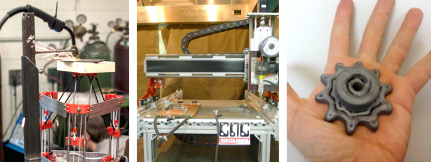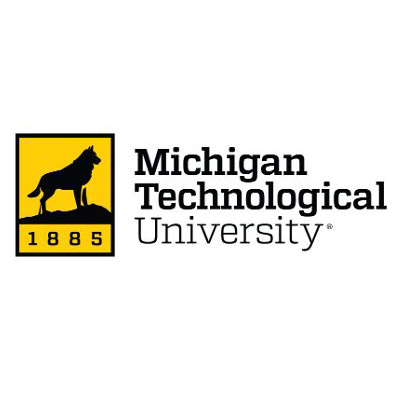


A significant cost reduction for metal 3D printing would provide an expanded user base, rapid technological design development, and increased commercialization for near net shape metal parts utilizing GMAW.
Design and development of a Metal 3D Printer utilizing the process of Gas Metal Arc Welding (GMAW) by maturing current proven concept to commercialization processes which would reduce the cost of metal 3D printing by a factor of 100 for use by SMEs in rapid prototyping and production.
Problem
While access to polymer printing in the world of additive manufacturing (AM) is affordable and accessible to the common user through various desktop size 3D printers, nothing comparable exists for metal 3D printing. The current high cost of 3D metal printers used in additive manufacturing excludes small and medium-sized enterprises (SMEs) and restricts the types of components that can be manufactured primarily to those of high value.
Objective
The key objective of this project was to reduce the cost of metal 3D printing by a factor of 100 compared to other methods of AM with decreased equipment cost and reduced print time. Affordable near net shape metal 3D printing utilizing Gas Metal Arc Welding (GMAW) would expand the user base for this AM technology which would be particularly beneficial for SMEs, for use in remote locations by military, and for integration in an additive-subtractive manufacturing environment.
Technical Approach
The project team provided an extensive knowledge base that included thermal simulation, 3D printer design, material analysis, and material applications that were utilized to develop the concept of a GMAW-based 3D printer. The tasking within this project included:
- Development of a metal 3D printer and initial GMAW proof-of-concept using the MOST stage 3D printer (a RepRap derived from the Rostock printer)
- Material design and process heat transfer modeling to optimize the metal 3D printing process
- Development of aluminum alloys specific to the MOST printer
- Fabrication and printing of new alloys from the material design modeling
- Performing microstructural and mechanical characterization of 3D printing material used in GMAW
Material characterization including surface finish, microstructure, and mechanical properties
Accomplishments
The project demonstrated that weld-based 3D printing has excellent potential for providing quick turnaround of near net shape parts when considering the balance between performance, complexity of the part, and cost. The final design provided a print area of 25 x 25 x 6 inches utilizing a modified router table from CNC Router Parts that replaces the router with a weld head attachment. The cost for a Do-It-Yourself 3D printer kit is less than $1,200 and the cost of a commercial 3D printer kit less than $3,300.
Structure-property relationships were established via microstructural and mechanical testing for 3D printed aluminum weld filaments (ER1100, ER4043, ER4943, ER4047, and ER5356), steel weld filaments (ER70S-2, ER70S-6, and 316L), and three new experimental aluminum alloys. Compared to printing commercially available weld alloys, the project provided results that indicate the AlSiSr alloy has less porosity, equivalent yield and tensile strengths, and twice the ductility.
An open-source control software was developed for 3D motion control and processing at Michigan Technological University. Named ‘Franklin,’ the software enables web-based 3D control of additive, subtractive, and analytical tools; allows communication with scripts for machine setup and control from any web interface; and utilizes custom protocols to allow processes to run even with temporary loss of internet connection.
From the project success, Aleph Objects and re:3D are continuing involvement in developing non-destructive low-cost modifications for Lulzbot and Gigabot to provide viable metal printing. 3D metal printing systems for larger print volumes utilizing the GMAW process are also being developed by CNC Router Parts, 3D4DU, and Square One. Along with these potential system developments, Hobart, who provides wire printing consumables, is experimenting with stronger and better printing alloys to be utilized with GMAW 3D printing. In addition, the technology developed within this project provides a baseline to potentially transition to Gas Tungsten Arc Welding (GTAW) 3D printing.
Project Participants
Project Principal

Other Project Participants
- ThermoAnalytics, Inc.
- Aleph Objects Inc.
- Re:3D
- CNC Router Parts
- Timken
- Hobart Filler Metals
- ITW Miller
- ASM International
Public Participants
- U.S. Department of Defense
- National Science Foundation
- U.S. Department of Energy
